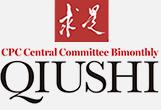An Analysis of the New Circumstances Facing the Development of New Institutions for a Higher-Standard Open Economy
To develop new institutions for a higher-standard open economy, we must accurately assess the new changes in the international landscape, adapt to the new trends in economic globalization, and fully grasp the new requirements for domestic reform and development.
Solid development foundations
Deeper reforms have been advanced across the board. Improvements have been made to the institutions underpinning the market economy, such as those for property rights protection, market access, fair competition, and social credit.
Efforts have been made to achieve breakthroughs in reforms in key areas and at crucial links. All these achievements have paved the way for faster progress in developing a unified national market and steady improvements in the socialist market economy.
With an average contribution to global growth of over 30% between 2013 and 2023, China has firmly maintained its position as the world's second-largest economy and the largest manufacturer. Further strides have been made toward high-standard opening up, with the full implementation of the Foreign Investment Law and regulations regarding its implementation, the continued reduction of the negative list for foreign investment, and the smooth introduction of the negative list for cross-border trade in services.
Major steps have also been taken to liberalize and facilitate trade and investment, and important achievements have been secured in developing new platforms for opening up, such as pilot free trade zones and the Hainan Free Trade Port. We have promoted high-quality development of the Belt and Road Initiative (BRI), with over 150 countries and more than 30 international organizations joining the BRI family.
A connectivity framework featuring six corridors, six route types, and multiple countries and ports has been put in place, and a raft of landmark projects have been built and put into operation, including the China Railway Express (CR Express), the China-Laos Railway, the Jakarta-Bandung High-Speed Railway, the Budapest-Belgrade Railway, and the Port of Piraeus to name a few, representing new progress and achievements in China’s pragmatic cooperation with other countries.
China has remained the world's leading trader of goods and largest holder of foreign exchange reserves for many years now; it is also one of the top destinations for foreign direct investment as well as a leading outbound investor. These achievements reflect the rapid development of the country's open economy.
Important strategic opportunities
The world economic landscape is evolving at a rapid pace, with the international balance of power trending toward equilibrium. The international influence of emerging markets and developing economies, with China as a representative case, is steadily increasing. Between 2000 and 2023, the economic output of this cohort jumped from 21% to 41.5% of the global total.
A new round of technological revolution and industrial transformation is now in full swing, as evidenced by explosive growth in multiple countries and sectors. In China, nationwide R&D investment exceeded 3 trillion yuan in 2023, with the ratio to GDP increasing from 1.91% in 2012 to 2.65% in 2023. China has climbed from 34th to 12th place in the Global Innovation Index in the same period.
Whereas it once lagged behind in key areas such as 5G, quantum computing, and green energy, it is now on par with the frontrunners and is leading the pack in some sectors. This has created favorable conditions for China to participate in and help channel the development of international economic and trade rules and standards.
The vision of a global community of shared future is being embraced by more and more people every day. As this Chinese-proposed initiative has become a point of international consensus, its power to inspire, shape, and influence has grown significantly, and it has become a source of positive energy for the international community.
Numerous challenges
The momentum for global growth is insufficient, global economic governance is inadequate, and global development is imbalanced. The failure to resolve these three major issues has heightened the level of risk and uncertainty in the global economy.
The backlash against economic globalization has caused a certain degree of damage to the ecosystem for open innovation and cooperation and restricted or choked off international economic flow. Conventional and non-conventional security risks are on the rise, while unilateralism, protectionism, and hegemonism threaten the security and stability of China's external environment.
China faces greater challenges in responding to external shocks and promoting smooth domestic and international economic flow. At home, the domestic economy is affected by difficulties and bottlenecks, with constraints still hindering the free flow of resources and production factors. More must be done to build a high-standard market system, and a high-level dynamic balance between supply and demand has yet to be achieved.
China's traditional advantages for participating in the international division of labor and competition have weakened somewhat, and there are significant disparities in the levels of both open economic development and opening up among regions. Greater efforts are needed to build a world-class business environment that is market-oriented, law-based, and internationalized.
Institutional opening up must be expanded, as gaps remain between domestic practices and international high-standard economic and trade rules. The foreign-related legal system also requires strengthening, and the effective prevention and resolution of risks remains an essential task in certain key areas.
Editor: Zhang Xian
























